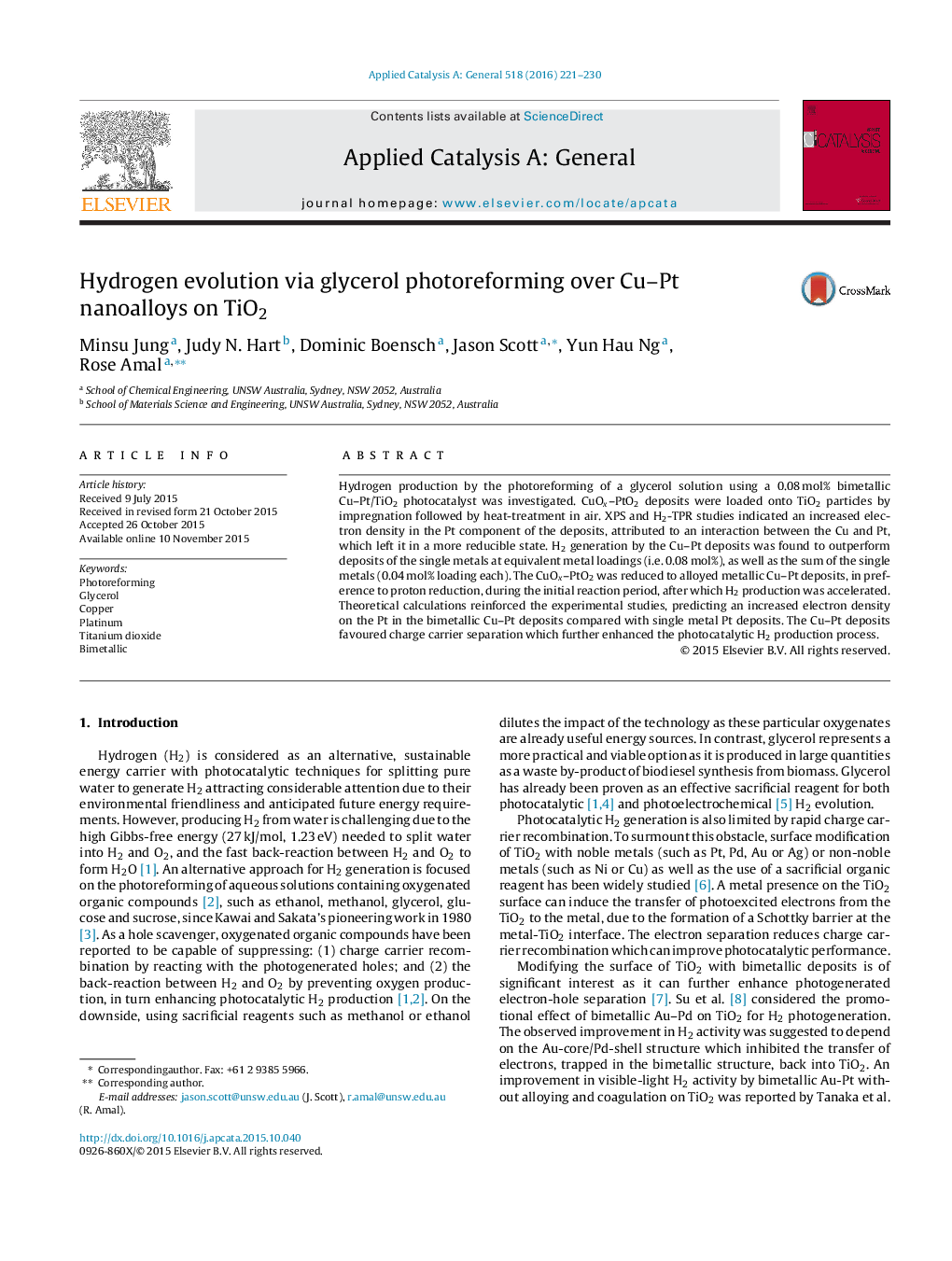| Article ID | Journal | Published Year | Pages | File Type |
|---|---|---|---|---|
| 39006 | Applied Catalysis A: General | 2016 | 10 Pages |
•Nanostructured CuOx–PtO2/TiO2 was prepared by impregnation.•The CuOx–PtO2 was reduced to bimetallic Cu–Pt during photoreforming.•Alloying the Cu and Pt promoted electron density within the Pt.•The increased Pt electron density facilitated H2 production beyond the sum of the individual Cu and Pt counterparts.
Hydrogen production by the photoreforming of a glycerol solution using a 0.08 mol% bimetallic Cu–Pt/TiO2 photocatalyst was investigated. CuOx–PtO2 deposits were loaded onto TiO2 particles by impregnation followed by heat-treatment in air. XPS and H2-TPR studies indicated an increased electron density in the Pt component of the deposits, attributed to an interaction between the Cu and Pt, which left it in a more reducible state. H2 generation by the Cu–Pt deposits was found to outperform deposits of the single metals at equivalent metal loadings (i.e. 0.08 mol%), as well as the sum of the single metals (0.04 mol% loading each). The CuOx–PtO2 was reduced to alloyed metallic Cu–Pt deposits, in preference to proton reduction, during the initial reaction period, after which H2 production was accelerated. Theoretical calculations reinforced the experimental studies, predicting an increased electron density on the Pt in the bimetallic Cu–Pt deposits compared with single metal Pt deposits. The Cu–Pt deposits favoured charge carrier separation which further enhanced the photocatalytic H2 production process.
Graphical abstractFigure optionsDownload full-size imageDownload high-quality image (156 K)Download as PowerPoint slide
